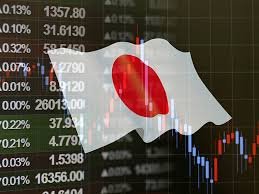Alongside the yen weakening, there has been a prevailing trend of dollar strength this week. The main driver behind yen weakness appears to be the receding expectations for the Bank of Japan to remove negative interest rates. Speculation related to the new NISA (Nippon Individual Savings Account) program is also contributing to this trend. However, it’s important to be cautious regarding the current level of the dollar-yen exchange rate.
The retracement of 50% from the decline between the high of 151.91 on November 13th and the low of 140.25 on December 28th stands at the level of 146.08. Last week, the rate briefly pulled back to 144.36 after reaching a high at the 146.41 level but is currently trading above 146 yen. While the short-term trend is strong, the potential for a correction should be taken into consideration as the rate has re-entered the retracement zone.
The key theme regarding the U.S. interest rate outlook revolves around when the rate cuts will begin and how many times they will occur throughout the year. Market expectations are fluctuating with speculation about a potential rate cut in March. Reflecting this uncertainty, the yield on the U.S. 2-year Treasury, often seen as an indicator of policy rate expectations, is trending lower. On the other hand, the U.S. 10-year Treasury yield, which has a greater impact on the dollar exchange rate, is showing signs of rising again. Due to this mixed landscape, the U.S. dollar index has lost direction since the beginning of the year. While it has experienced a slight upward movement recently, thanks to the rise in dollar-yen, it remains uncertain whether this will set the tone for future developments.
It will be essential to pay attention to how much restraint U.S. financial officials exercise regarding the start of rate cuts. Today, Waller, a member of the Federal Reserve Board, will deliver a speech on the economic outlook and monetary policy. Yesterday, a series of ECB (European Central Bank) hawkish members expressed the view that it is too early to discuss rate cuts. Given that central banks typically emphasize data-driven decisions, it is anticipated that U.S. officials will seek to curb market pricing for premature rate cuts. However, there is also the possibility of disappointing comments, which could lead to a reversal in the direction of the U.S. dollar.
In addition, ECB member Francois Villeroy de Galhau will participate in discussions at the Davos Conference. His stance in contrast to the hawkish comments made by the Austrian central bank yesterday will be worth observing. Furthermore, yesterday, Andrew Bailey, Governor of the Bank of England, spoke about the 2024 economic outlook, discrepancies between the Bank of England and the Office for Budget Responsibility’s forecasts, and British bonds. Differences in inflation and interest rate expectations could lead to pound-buying pressure if they suggest a generally higher level of inflation and interest rates.
Economic indicators to be released in international markets later today include UK employment statistics for December, ECB consumer inflation expectations (1-year and 3-year ahead), final German consumer price index for December, German ZEW Economic Sentiment Index for January, Canadian housing starts for December, Canadian consumer price index for December, and the New York Federal Reserve Manufacturing Business Conditions Index for January.
Other events to watch out for include earnings announcements from major U.S. financial institutions such as Goldman Sachs and Morgan Stanley.
The flow of the U.S. dollar can change quickly, but the trend of yen weakening seems unlikely to change again in the near term. Today, the plan is to monitor opportunities for yen selling.


